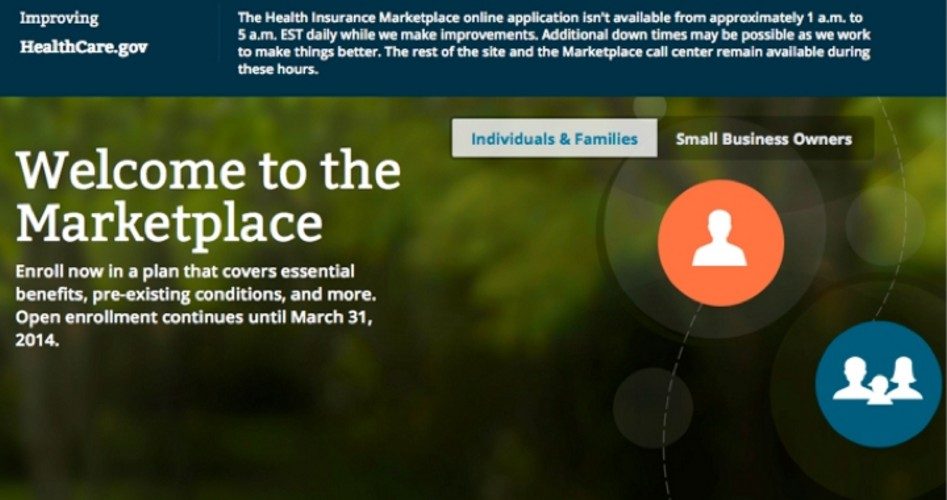
“Even with the issues we’ve had, the marketplace is working and people are enrolling,” happily announced Health and Human Services Secretary Kathleen Sebelius on November 13, bizarrely referring to the botched launching of the federal government’s Obamacare website and the official admission that only 26,794 people had managed to sign up for health insurance in October using the troubled HealthCare.gov federal site.
“It is very much up-and-running,” said Sebelius, deceptively referring to the still-malfunctioning federal website.
We’re lucky she’s not a pilot. I can imagine Captain Sebelius’s announcement from the cockpit to a plane load of panicking passengers as she’s crashing a transatlantic flight directly into the ocean. “Hold on folks, we’re just stopping for some really fresh fish while I bang the @#$%& glitches out of these @#$%& instruments!”
Altogether, 106,185 people selected health insurance in October using the federal and state sites — 79,391 using the 15 state-run websites and 26,794 people using the federal site that covers the balance of the states.
October’s total enrollment figure of 106,185 was only about one-fifth of the 500,000 enrollees that the Obama administration predicted would sign up during the first month and only 1.5 percent of the enrollees that the administration predicted would be signed up by March 31.
Additionally, the 106,185 enrollee number “includes those who have selected a plan who either have or have not paid their first month’s premium,” said the Department of Health and Human Services.
Secretary Sebelius told reporters on a conference call that Health and Human Services would be able to tell them by December 15th how many people had paid for their month of October coverage.
Sebelius told reporters that the whole insurance thing is mighty tricky — getting the enrollee numbers right, the no-pays, the glitches, the security holes. “Buying insurance,” she said, “is very different from buying as toaster.”
No reporter responded by pointing out we’d probably never again be able to get a piece of bread that was toasted to precisely the preferred shade of golden brown on both sides if the federal government made toasters.
In any case, the Department of Health and Human Services tried to spin October’s sorry enrollee numbers as a success, deceivingly proclaiming, “The first month enrollment experience in the marketplace exceeds comparable first month enrollment in the Commonwelath Care program in the Massachusetts Health Connector.
Citing comparable enrollment numbers as a victory for the administration, they didn’t mention that the population of Massachusetts is just 2 percent of the population of the United States — the U.S. Census Bureau’s 2013 population number for Massachusetts of 6,646,194 versus the nation’s population of 317,062,164 on the U.S. Population Clock as I’m typing this sentence. In any case, more than 47 million U.S. adults now go without health insurance. Enrolling people at October’s rate of 106,185 per month, and assuming that those who aren’t fully subsidized will get around to paying their premiums, it will take just short of a half-century to get everyone insured.
Except it’s worse than that because an estimated five million people lost their health insurance while the government bureaucracies were signing up 106,185 customers — and more piles of insurance cancellations are in the mail.
All this blew up while they were just trying to get people to shop and buy — the easy part, like going online to buy a car. The real explosion of incompetency is going to occur when they start tearing the product apart.
Ralph R. Reiland is an associate professor of economics at Robert Morris University in Pittsburgh.



